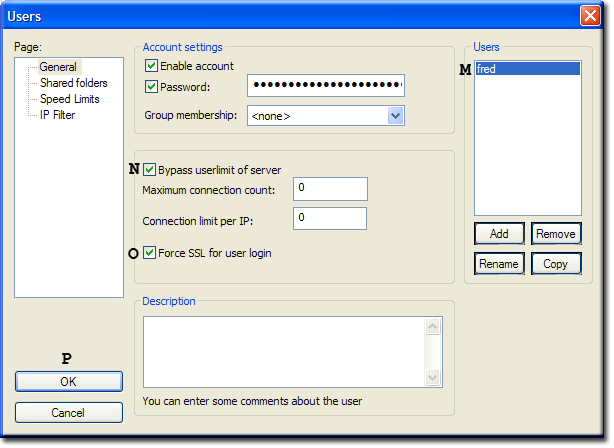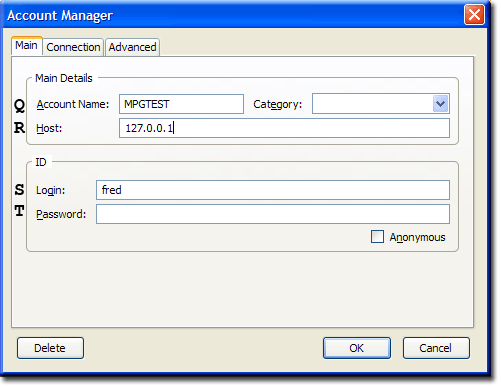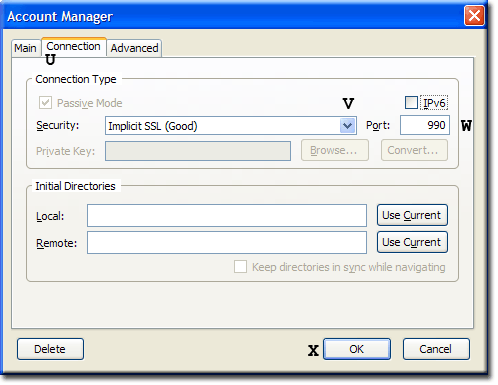FileZilla Server2: Implicit SSL part 1
|
FileZilla Server2: Introduction | Portable FileZilla FTPd | Install Options | Basic Config 1 | Basic Config 2 | Implicit SSL part 1 | Implicit SSL part 2 |
| Uniform Server 4.1-Mona FileZilla FTPd (Server). |
Implicit SSL
The previous pages descried how to install the FileZilla server on uniform server. Passwords and data are sent unencrypted over the Internet. Depending on your application and use this is adequate and suitable for most purposes.
FileZila FTPd overs a much more secure alternative using SSL to encrypt both passwords and data. There are a number of steps required in setting up a secure FTP server hence is relatively difficult. I have split this over two pages making it clearer and hopefully easier to understand.
The procedure is incremental first create a server certificate ensure it runs on a local network and finally configure for Internet access.
Server certificate
FileZilla has a built in certificate generator making this process very easy.
I have assumed the servers are installed for portable operation because of this Uniform Server must be running.
Note: Only portable mode requires this restriction. More specifically it’s the creation of a virtual drive that is required. Neither Apache nor MySQL need to be running.
Enable SSL support
Note:
|
|
Fill in certificate detailsClicking Generate new certificate opens the certificate form fill in as follows:
|
|
Enable user to use SSL
That completes the FileZille set-up. Note: Although we are using a single user account the above can be applied to other users. You can have a mix of users some using encryption while other do not the choice is yours. |
Client
FireFox and FireFTPI am assuming your are using FireFox and FireFTP these two are a great combination. You can use your preferred client the set-up will be similar. Check your clients manual for instructions.
Main Tab
|
|
Connection Tab
Local testFrom FireFTP click the Connect button enter name and password. Your browser will have a whinge, create a certificate exception. FTP folder will display. Local network testOn another PC connected to your network repeat the above steps 1-9. Note: At step 1 enter your PC’s IP address. (See Basic Configuration 1 page how to obtain IP address) That confirms you can access the FTP server across your network. |
Summary
The above provides a secure link to your FTP server. If you are running a wireless network, data can be intercepted by sniffing the radio signals.
Should your basic wireless security be compromised the FTP encryption will provide another hurdle making it more difficult for that data to be accessed.
You do need the above security when FTPing data across the Internet. Before proceeding to the final part make sure you can securely FTP locally.




